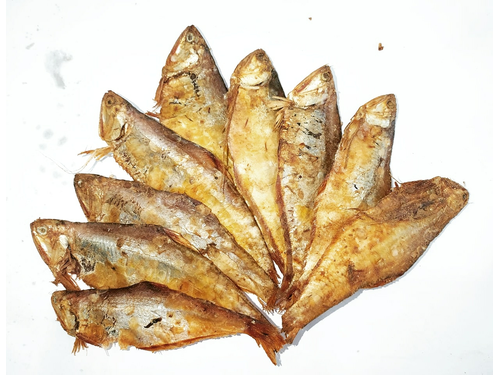
Shidol: The Unique Fermented Fish Delicacy of Bengal & Northeast India
Shidol (Shutki Sidol): The Bold Fermented Fish of Bengal & Northeast India
If you love unique and traditional flavors, Shidol: The Unique Fermented Fish Delicacy of Bengal & Northeast India (Shutki Sidol) is a must-try! This fermented dry fish is a staple in Bengali, Assamese, Manipuri, and Tripuri cuisine. It has an intense aroma and bold, umami-rich taste that elevates curries, chutneys, and stews. Shidol adds a deep, earthy flavor that transforms ordinary meals into memorable culinary experiences.
In this guide, we explore:
✅ What Shidol is and how it’s made
✅ Its cultural significance in Bengal and Northeast India
✅ Popular Shidol-based dishes and recipes
What is Shidol?
Shidol (শিদল) is a fermented fish product made primarily from small freshwater fish like puti, phasa, or punti. Unlike regular dried fish (Shutki), Shidol undergoes months of natural fermentation in earthen pots, which gives it a soft texture and a pungent, umami-rich flavor.
Regional Variations:
-
In Bengal and Assam, Shidol features in spicy curries and chutneys.
-
In Tripura and Manipur, it is essential in ethnic tribal dishes.
-
In Meghalaya and Mizoram, Shidol enriches many traditional stews.
How is Shidol Made?
-
Sun-Drying Small Fish: Clean small freshwater fish such as puti, phasa, or mola, then sun-dry them thoroughly.
-
Fermentation: Pack the dried fish tightly in earthen pots and seal them with clay.
-
Natural Aging: Let the fish ferment naturally for 4–6 months, developing its signature strong aroma and taste.
-
Ready to Use: Remove the fermented fish, soften it if needed, and incorporate it into curries, chutneys, or stews.
Unlike ordinary dried fish, Shidol’s fermentation enhances flavor, aroma, and texture, making it a treasured ingredient in traditional kitchens.
Health Benefits of Shidol
Shidol is not only flavorful but also nutritious:
✔ Rich in Protein & Omega-3: Supports muscle growth, brain health, and overall energy.
✔ Boosts Gut Health: Fermented foods provide probiotics and aid digestion.
✔ High in Essential Minerals: Contains calcium, iron, and phosphorus.
✔ Energy-Packed: Traditionally consumed by farmers and laborers for sustained energy.
Popular Dishes Made with Shidol
1. Shidol Bharta (Spiced Fermented Fish Mash)
Shidol Bharta is a popular Bengali dish where fermented fish is mashed with mustard oil, onions, garlic, and chilies, creating a bold side dish for rice.
Ingredients:
-
2–3 pieces Shidol
-
2 tbsp mustard oil
-
1 onion, finely chopped
-
2–3 green chilies
-
1 tsp garlic paste
-
Salt to taste
Method:
1️⃣ Heat mustard oil and lightly fry Shidol.
2️⃣ Mash the fish with garlic, chilies, onions, and salt.
3️⃣ Serve immediately with hot rice.
2. Shidol Shutki Dal (Lentils with Fermented Fish)
This hearty dish combines Shidol with lentils, giving the dal a smoky, deep flavor that elevates traditional Bengali meals.
Ingredients:
-
½ cup masoor dal (red lentils)
-
2 pieces Shidol
-
2 tbsp mustard oil
-
1 chopped tomato
-
2 cloves garlic, crushed
-
2 green chilies
-
½ tsp turmeric
-
Salt to taste
Method:
1️⃣ Boil the dal with turmeric and salt.
2️⃣ Fry Shidol in mustard oil with garlic, chilies, and tomato.
3️⃣ Add the fried Shidol to the dal and simmer for 5 minutes.
4️⃣ Serve with steamed rice.
3. Shidol Curry (Northeast-Style Spicy Fermented Fish Curry)
Shidol Curry from Tripura and Manipur blends fermented fish with vegetables for a spicy, aromatic meal.
Ingredients:
-
3 pieces Shidol
-
1 cup chopped vegetables (potatoes, eggplant, pumpkin)
-
2 tbsp mustard oil
-
1 sliced onion
-
2–3 dried red chilies
-
½ tsp turmeric
-
Salt to taste
Method:
1️⃣ Fry Shidol in mustard oil until fragrant.
2️⃣ Add onions, dried chilies, and turmeric; sauté briefly.
3️⃣ Add vegetables and cook until tender.
4️⃣ Simmer with water for 10 minutes and serve hot.
Why Traditional Food Lovers Adore Shidol
✅ Intense, Umami-Rich Flavor: Shidol deepens flavors in curries, dals, and stews.
✅ Long Shelf Life: Can be stored for months without refrigeration.
✅ Staple in Rural & Tribal Communities: A nutritious, energy-packed ingredient.
Although its strong smell may initially deter some, those who embrace Shidol discover its irresistible taste and culinary versatility.
Conclusion
Shidol: The Unique Fermented Fish Delicacy of Bengal & Northeast India, is more than fermented fish—it is a cultural treasure of Bengal and Northeast India. Its bold aroma and umami flavor elevate traditional dishes like bharta, dal, and curry. Whether you are exploring regional cuisine or looking to try something truly authentic, Shidol brings a distinct, unforgettable taste to every meal.
Explore Shidol: The Unique Fermented Fish Delicacy of Bengal & Northeast India and celebrate the rich culinary heritage of Bengal and Northeast India through your cooking!


